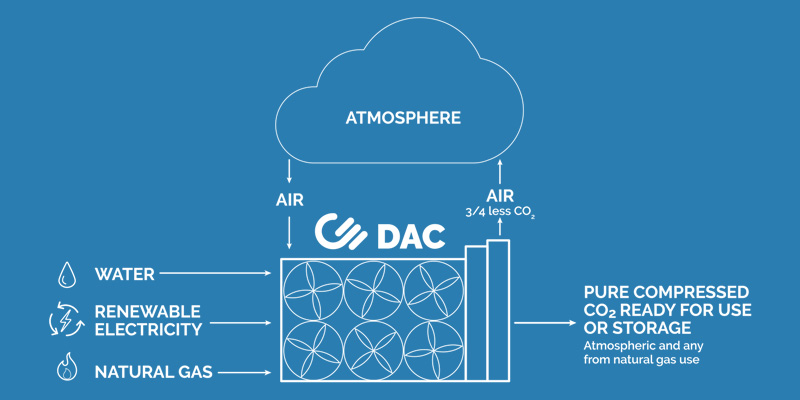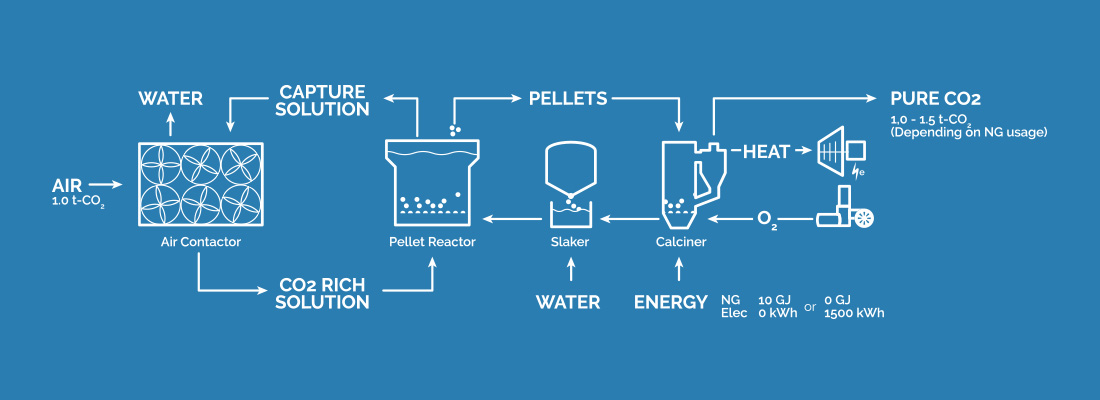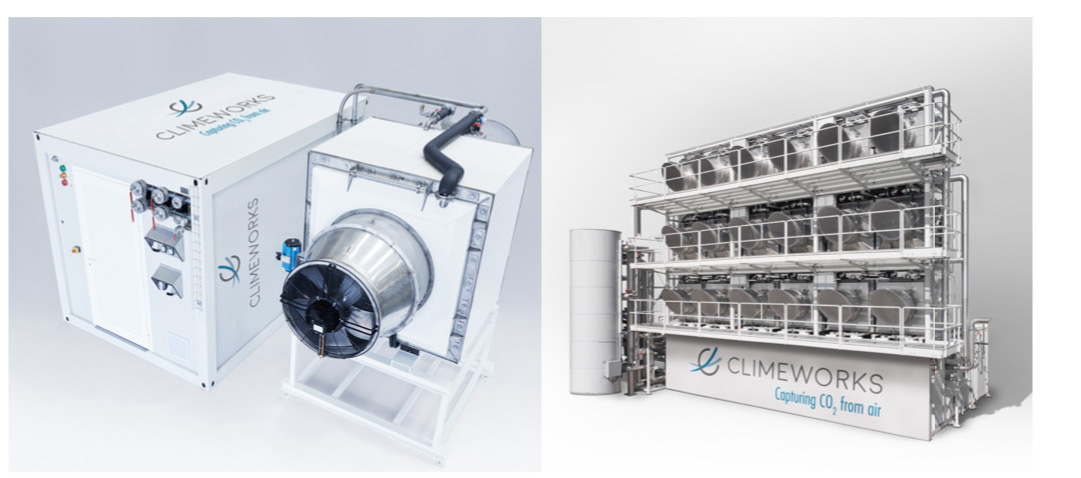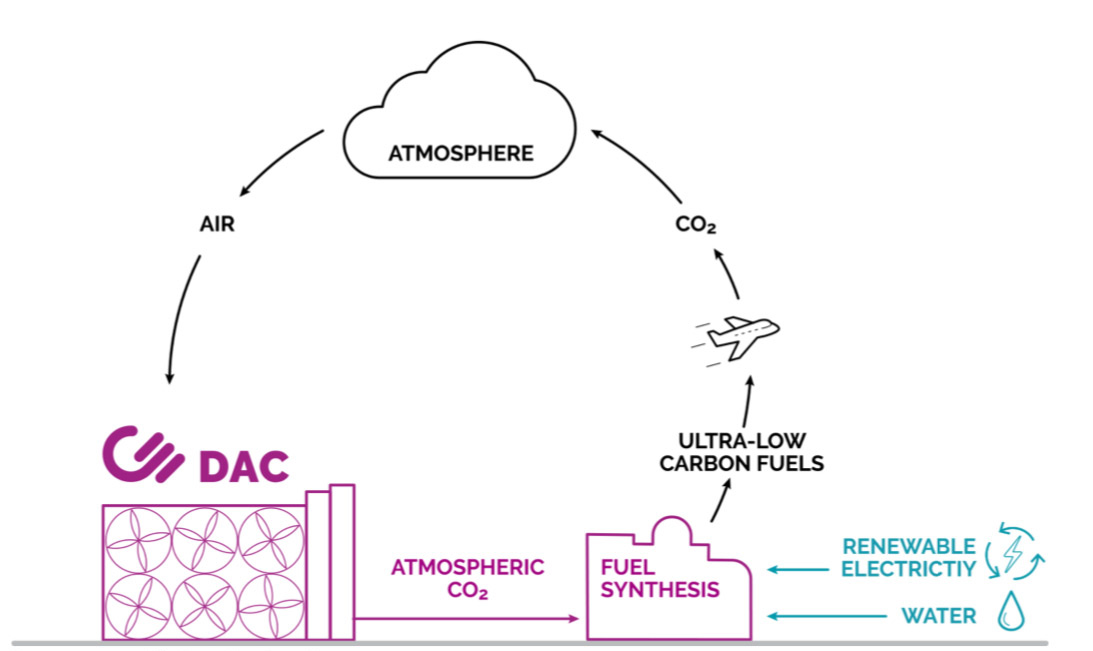Atmospheric Scrubbing and Waste Processing
Climate change is a consequence of the concentration of greenhouse gases in our atmosphere. When the sun’s energy hits Earth, a portion of that energy is absorbed into the ground. Greenhouse gases, like carbon and methane, block more heat from radiating into space than nitrogen, which is the primary gas in earth’s atmosphere.[20] In function, this works much like a bedding blanket: the thicker the blanket, the more heat that blanket retains. The more heat it retains, the warmer you become – and this is happening on a planetary scale.[21] This problem adversely affects weather and long-term polar ice melt, but also exacerbates droughts, wildfires, smog and air pollution – saying nothing of mass human migration. Alongside resource scarcity, climate change ranks among the most serious problems of our time, with potentially catastrophic consequences for our civilization should it remain unaddressed.[22]
Worse, solutions to this problem that involve scaling back fossil fuels have proven politically precarious,[23] as the oil and gas industry is a major driver of the global economy and many entrenched power players owe their wealth to its lucrative returns. Even if this wasn’t the case, the greenhouse gas emissions from manufacturing, agriculture and global commerce would still persist even if our fuel supply chain was carbon neutral.[24]
Getting ahead of the impacts of climate change are laudable efforts. But they, in all truth, needed to begin decades ago when the first warnings were sounded (and unfortunately ignored).[25] Humanity has already passed an initial carbon tipping point of 400 parts-per-million[26] and global fossil fuel usage and consumption is accelerating[27] – as is our population – meaning that even though we recognize the problem of climate change, it’s getting continually worse even as we attempt to step up efforts to slow it down.
Switching to a clean, carbon-neutral energy schema like Scarcity Zero is an essential part of any strategy to avoid the calamitous results of climate change. But even if it was implemented as proposed it wouldn’t by itself clean the atmosphere of the greenhouse gasses already present. It can, however, power unique systems designed to accomplish this very task.
An atmospheric scrubber is a machine that strips greenhouse gases from the atmosphere, either by a chemical or mechanical method.[28] A primary example is Direct Air Capture, which blows air through towers containing a solution that reacts with certain compounds, removing them to form a substance that can be further processed into materials – including fuel.[29]
A Vancouver, Canada-based company named “Carbon Engineering” has patented several Direct Air Capture methods to isolate carbon from air through modular fan assemblies that work in unison with each other.[30] Their current pricing models assess a rate of $100 per-ton of CO2 captured under combined-cycle natural gas, which costs significantly more at present than Scarcity Zero’s target of 2 cents per kilowatt-hour.

As with other Direct Air Capture technologies, water and fuel are produced as deliverables alongside renewable electricity through cogenerative functions.

Another noteworthy component of this system is use of a chemical cycle that both uses non-toxic materials and is functionally closed-loop,[31] meaning that the chemicals (and thermal energy) used for Direct Air Capture is continually re-used and does not require frequent refueling over time. This makes the method both environmentally friendly and indefinitely scalable.

Several other ventures have come to market with similar technologies. Iceland’s Climeworks’ models, for example, are both modular and scalable with their largest units being capable of capturing nearly 5,000 kilograms of carbon per-day.[32] In addition to standard carbon capture, they also are able to condense captured carbon into usable fuels[33] or solid carbon for use in materials.[34]


Other companies, including Silicon Kingdom Holdings in the United Kingdom and Alabama-based Global Thermostat have obtained patents for similar models that perform similar functions in abstract.[35]
The costs of these systems stand to fall significantly over time through continued investment and research, and their operational costs stand to fall even further if implemented within a modular energy framework. And while cost reductions are realized maximally if integrated within CHP Plants, that shouldn’t overshadow other highly significant benefits that occur as well.

Because captured carbon is stored on-site, along with molecular hydrogen from electrolysis facilities, there is ample source material to make unique hydrocarbons with low-carbon emissions.[36] This means that not only are we able to produce hydrogen fuel through CHP Plants, we’re also able to further produce specialized hydrocarbons that have applications within chemical engineering, fuels for motor vehicles, heavy machinery, commercial aviation and aerospace.
Further, as any emissions from these applications (especially commercial aviation)[37] can be captured by these facilities and re-converted into usable fuel, we’re able to leverage the combined benefits of CHP Plants to not only help clean our atmosphere but present yet another avenue for sustainable fuel production.
Due to the modular nature of this approach, CHP Plants can be deployed both rapidly and at scale – also in a way that is location-agnostic. Building hundreds or thousands of them worldwide is limited only by vision and capital. Considering that their overnight cost is not prohibitively expensive[38] in the context of nationwide power[39] (or avoiding the consequences of resource scarcity and climate change), it’s an ideal approach that can cascade in effect to present immense social benefits practically anywhere on the planet.
In an ideal scenario, prefabricated facilities could be delivered turn-key, initiated in a matter of weeks for instant energy and resource production. With an effectively unlimited source of clean energy, problems of nearly any scale – even planetary – become solvable. And the more modular and adaptable these sources of energy become, the quicker they can arrive to deliver solutions that mitigate the impact of energy, climate or resource-driven social problems.
Symbiotic, cogenerative energy deployments are the next stage in our evolution of power generation not just because they solve several problems at once. They also address physical and economic challenges presented by our current ad-hoc approach to power generation:
- Constructing a single facility that can generate multiple types of energy and resources at one location is significantly less expensive than if these facilities were located far from each other.
- Consolidating multiple functions into a single facility avoids expenses of transmission and transportation, increasing overall efficiency.
- Symbiotic design helps establish ideal standards for implementation and operation. This reduces costs and helps encourage greater adoption of the Scarcity Zero framework.
- The fresh water produced from CHP Plants can come out hot – which will become important as we look at the concept of the National Aqueduct within the next few chapters.
What we can have with such symbiotic deployments of advanced energy technologies – what we can have today – is something that we have never before had in our history: the ability to synthetically, sustainably, and inexpensively produce as much electricity, water and fuel as we could ever need. All this while de-polluting our environment and combating climate change as a dedicated effort. And once we have these functions in hand, we can look beyond them, using any excess waste energy to produce resources to even greater extents.
While we began with electricity, water, and fuel out of necessity, we can extend the framework further in the fields of agriculture, chemical engineering, recycling processes and next-generation building materials. The next step towards that future comes from the National Aqueduct – a vital function of Scarcity Zero that ties each of its core technologies together into a nationwide network of energy and resource abundance.
